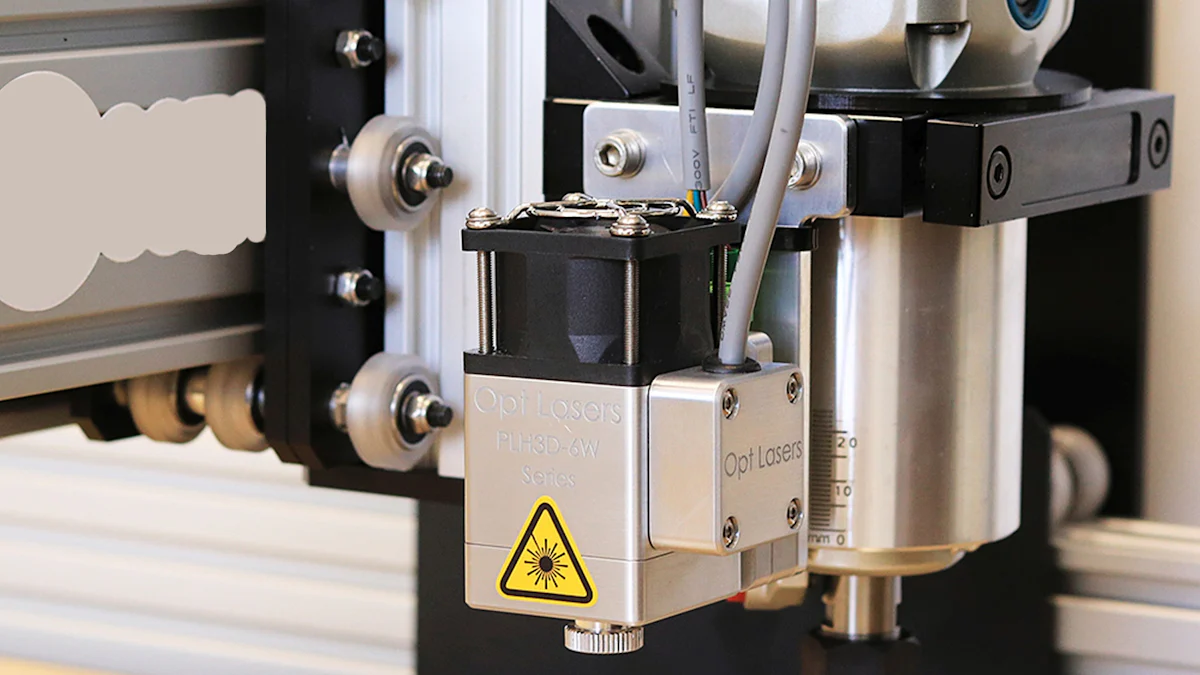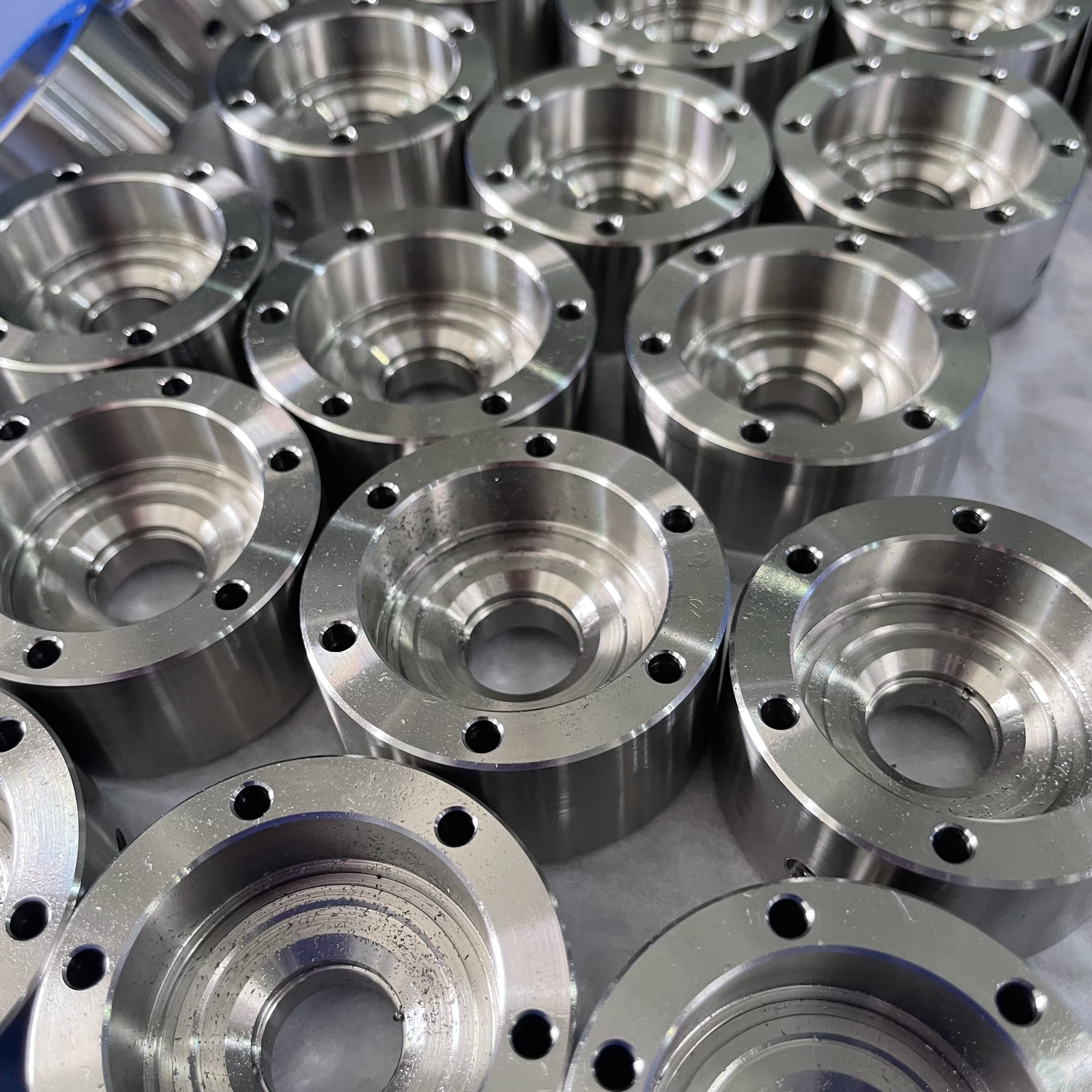Learning from Mistakes: Key Lessons in Clamping and Holding for CNC Machining

My First Encounter with CNC Machining
When I first delved into the world of CNC machining, I was filled with a mix of excitement and overwhelm. The prospect of creating intricate and precise components using computer-controlled machines was exhilarating. However, the complexity of the process and the multitude of factors to consider left me feeling slightly overwhelmed.
As I delved deeper into the realm of CNC machining, I realized the pivotal role that clamping and holding play in ensuring the success of the entire process. Without proper clamping and holding techniques, even the most meticulously designed components could end up flawed due to inaccuracies caused by inadequate workpiece stability.
The Excitement and the Overwhelm
The excitement stemmed from the endless possibilities that CNC machining offered. The ability to transform digital designs into tangible objects with unparalleled precision was truly captivating. However, this excitement was accompanied by a sense of overwhelm as I grappled with understanding the intricate details involved in setting up a successful CNC machining operation.
Why Focus on Clamping and Holding?
Clamping and holding are fundamental aspects of CNC machining that directly impact the accuracy and quality of the final product. Without secure and precise clamping, even the most advanced cutting tools and programming prowess can fall short in delivering impeccable results. Therefore, it became evident early on that mastering clamping and holding techniques is crucial for achieving excellence in CNC machining.
My initial experiences with CNC machining laid a strong foundation for understanding its complexities, especially emphasizing the critical nature of effective clamping and holding strategies. In hindsight, it's clear that focusing on these foundational elements from the outset has significantly contributed to my growth as a proficient CNC machinist.
In my journey through CNC machining, I've come to appreciate how mastering these foundational aspects sets the stage for achieving remarkable precision and quality in manufacturing processes.
Understanding the CNC Machining Process
As I delved deeper into the realm of CNC machining, I gained a comprehensive understanding of the intricate process involved in transforming digital designs into tangible components. The CNC machining process encompasses a series of precise steps and crucial considerations that collectively contribute to the creation of high-quality products.
The Basics of CNC Machining
CNC machining involves the utilization of computer numerical control (CNC) systems to automate machine tools' operation for manufacturing complex and detailed components. This advanced technology enables machinists to execute precise cuts and shapes on various materials, ranging from metals to plastics, with unparalleled accuracy.
Key Components of the CNC Machining Process
The CNC machining process comprises several essential components that work harmoniously to bring digital designs to life. These include computer-aided design (CAD) software for creating intricate part models, computer-aided manufacturing (CAM) software for generating toolpaths, CNC machines equipped with cutting tools, and robust clamping/holding systems for securing workpieces during machining operations.
Importance of Precision in CNC Machining
In the realm of CNC machining, precision reigns supreme as it directly influences the quality and functionality of manufactured components. Achieving precision involves meticulous attention to detail and adherence to tight tolerances throughout the entire production process.
Accuracy vs. Precision
In CNC machining, accuracy refers to how close a measurement comes to its intended value, while precision pertains to how close multiple measurements are to each other. Striking a balance between accuracy and precision is paramount in ensuring that machined components meet design specifications with consistent repeatability.
Role of Clamping/Holding Systems in Achieving Precision
The significance of clamping/holding systems cannot be overstated when it comes to achieving precision in CNC machining. These systems provide stability and rigidity to workpieces during cutting operations, minimizing vibrations and deflections that could compromise dimensional accuracy. By securely holding workpieces in place, clamping systems facilitate the execution of precise cuts and contours as per the intended design.
In my journey through CNC machining, I've witnessed firsthand how meticulous attention to clamping/holding techniques significantly enhances the overall precision and quality of manufactured parts. Embracing these foundational elements has been instrumental in elevating my proficiency as a CNC machinist.
The Art of Clamping/Holding in CNC Machining
As I delved deeper into the world of CNC machining, I gained a profound appreciation for the artistry involved in clamping and holding systems. These foundational elements are pivotal in ensuring the success of the CNC machining process by providing stability and rigidity to workpieces during cutting operations.
Types of Clamping/Holding Systems
Hydraulic and Pneumatic Methods
In CNC machining, hydraulic and pneumatic methods are widely utilized for securing workpieces during machining operations. Hydraulic systems leverage fluid power to exert force, while pneumatic systems use compressed air to achieve the necessary clamping pressure. Both methods offer quick and robust clamping solutions, enhancing efficiency and productivity in manufacturing processes.
Workholding Devices: Chucks, Vises, and Jigs
Workholding devices play a crucial role in maintaining workpiece stability during CNC machining. Chucks, commonly used for holding cylindrical workpieces, provide secure gripping through adjustable jaws. On the other hand, vises offer versatile clamping options for securing variously shaped workpieces with precision. Additionally, jigs serve as valuable fixtures for guiding cutting tools with utmost accuracy, ensuring consistent part production.
Common Mistakes and How to Avoid Them
Incorrect Placement of Clamps
One common mistake in CNC machining is the incorrect placement of clamps on workpieces. Improper positioning can lead to uneven distribution of clamping forces, resulting in workpiece deformation or compromised dimensional accuracy. To avoid this pitfall, meticulous attention should be given to strategically placing clamps above the workpiece supports to ensure uniform force distribution without causing any distortions.
Choosing the Wrong Clamping System
Another critical error that aspiring CNC machinists may encounter is selecting an inadequate clamping system for specific machining requirements. The wrong choice of a clamping system can lead to instability during cutting operations, jeopardizing the precision and quality of manufactured components. To mitigate this risk, thorough analysis of workpiece characteristics and machining demands is essential for selecting an appropriate clamping system that aligns with the intricacies of each production task.
In my journey through CNC machining, I've encountered these common mistakes firsthand and learned valuable lessons on how to navigate around them effectively. Embracing a proactive approach towards understanding different types of clamping/holding systems has been instrumental in honing my skills as a proficient CNC machinist.
Learning from My Mistakes
A Personal Anecdote: My First Major Mistake
Early in my journey through the realm of CNC machining, I encountered a significant learning opportunity that stemmed from my first major mistake. It was during a crucial production task where I was tasked with crafting intricate components for a precision engineering project. The setup involved utilizing advanced CNC machining techniques to transform digital designs into tangible parts with meticulous accuracy.
The Setup
As I embarked on the setup process, I meticulously programmed the cutting paths and selected the appropriate tools to execute the intricate contours and features specified in the design. However, in my eagerness to commence the machining operation, I overlooked a critical aspect – ensuring optimal stability through robust clamping and holding techniques. The workpiece, although meticulously designed digitally, lacked the necessary secure fixation during machining, leading to minute shifts and vibrations that compromised the precision of the final components.
The Lesson Learned
This pivotal experience served as a profound lesson in understanding the indispensable role of effective clamping and holding strategies in the CNC machining process. It underscored the fact that even the most advanced programming and cutting tools could not compensate for inadequate workpiece stability. Through this mistake, I gained a deeper appreciation for how meticulous attention to clamping and holding profoundly influences the overall quality and precision of machined components.
Key Takeaways for Aspiring CNC Machinists
The Importance of Proper Planning
One invaluable takeaway from this experience is the paramount importance of proper planning before commencing any CNC machining operation. This entails meticulous consideration of not only toolpaths and cutting strategies but also comprehensive evaluation of clamping and holding requirements specific to each production task. By integrating robust clamping plans into initial setup considerations, aspiring CNC machinists can preemptively mitigate potential errors stemming from inadequate workpiece stability.
The Value of Learning from Mistakes
Embracing mistakes as invaluable learning opportunities is essential for continuous growth in proficiency as a CNC machinist. Each misstep presents an opportunity to refine techniques, deepen understanding, and fortify foundational knowledge. By acknowledging mistakes with humility and openness, aspiring CNC machinists can cultivate resilience and adaptability while honing their craft within the dynamic realm of CNC machining.
Final Thoughts
Embracing Mistakes as Learning Opportunities
In the realm of CNC machining, every mistake serves as a valuable learning opportunity, offering profound insights that contribute to continuous growth and refinement of skills. Embracing mistakes with an open mindset fosters a culture of resilience and adaptability, essential traits for aspiring CNC machinists navigating the dynamic landscape of precision manufacturing.
Mistakes, whether minor setbacks or significant errors, provide fertile ground for honing problem-solving abilities and deepening understanding. By acknowledging and analyzing mistakes with humility, CNC machinists can uncover innovative solutions and alternative approaches that enhance their proficiency in clamping/holding systems and overall machining techniques.
Embracing mistakes also cultivates a spirit of curiosity and experimentation. It encourages future machinists to explore unconventional methods, iterate on existing practices, and push the boundaries of traditional approaches to clamping/holding in CNC machining. Through this exploration, new insights emerge, paving the way for groundbreaking advancements in workpiece stability and precision manufacturing.
Encouragement for Future Machinists
To all future CNC machinists embarking on their journey into the world of precision manufacturing, I offer words of encouragement. Embrace each challenge as an opportunity for growth. Approach each mistake with curiosity rather than trepidation, knowing that it holds within it the potential for invaluable lessons.
As you navigate through the intricacies of clamping/holding systems in CNC machining, remember that mastery is a journey marked by both successes and failures. Each setback is not a reflection of inadequacy but rather a stepping stone towards expertise. Stay committed to refining your craft, seeking knowledge from every experience, and leveraging mistakes as catalysts for innovation.
In closing, I extend my support to all future machinists venturing into the captivating realm of CNC machining. Your dedication to mastering clamping/holding systems will undoubtedly shape the landscape of precision manufacturing in remarkable ways.
See Also
Achieving CNC Precision Machining Clamping Accuracy: 3 Key Tips
Becoming a CNC Machining Master: Tolerances, Prototyping, and Material Selection
Mastery of CNC Turning: A Comprehensive Guide
Perfecting Precision: A Guide to CNC Programming and Machining
CNC Turning Mastery: Key Parameters and Metalworking Techniques
About US
Follow Us
Your prototype holds unparalleled significance, and we deeply value its uniqueness. Collaborating with you during the preparation phase for running your prototype or parts is a commitment we gladly embrace. Whether it's a single part or a complex assembly, we are dedicated to selecting the optimal tools and pathways to bring your envisioned product to life.
At Precision Fab CNC Machining, we specialize in producing parts for prototypes, short runs, and high-volume production. Our prototyping machine capabilities extend across metal, plastic, and wood machining, with welding fabrication services available to complement and finalize your prototype if required.
Address
Address: Room320 10F, Building A,Nanshan international building, Dayawan District, Huizhou, Guangdong, 516001 China
Contacts
billy@timaycnc.com

